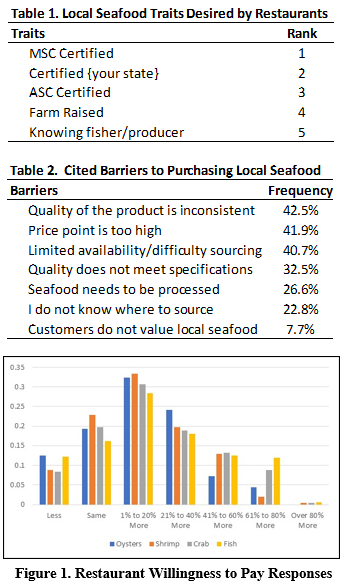U.S. COASTAL RESTAURANT SURVEY HIGHLIGHTS MARKETING OPPORTUNITIES FOR LOCAL AQUACULTURE AND SEAFOOD PRODUCERS
Over four hundred (n=424) restaurant procurers in the coastal United States were surveyed in June 2021. For comparison purposes, 25% of restaurant respondents were from the northeastern, southeastern, northwestern, and southwestern U.S., respectively. The survey sought respondents that work in the restaurant industry and make food purchasing decisions for their restaurants. The questionnaire consisted of general questions about restaurant characteristics, seafood purchasing preferences and willingness to pay, and barriers to buying or buying more local seafood. Survey results show that restaurant procurers look for specific traits in local seafood and aquaculture products. The top three desired traits were: Marine Stewardship Council (MSC), locally certified (through state programs), and Aquaculture Stewardship Council (ASC) certified. Cited barriers to purchasing more local seafood include inconsistent quality, high prices, limited availability, and further processing needs.
Variables significant for restaurants purchasing local seafood (versus those that do not) are fewer seats, higher entrée cost, and more years in business. Variables significant for restaurants’ willingness to purchase local seafood found that restaurant type, serving alcohol, and catering to residents (versus tourists) were associated with restaurants willing to pay more. Summarizing restaurants’ willingness to pay for local seafood shows the most frequent response as a 1% to 24% premium (Figure 1).
This research helps local aquaculture producers target their sales efforts while identifying marketing barriers. It also appears that certifications for seafood are important to restaurant procurers.
